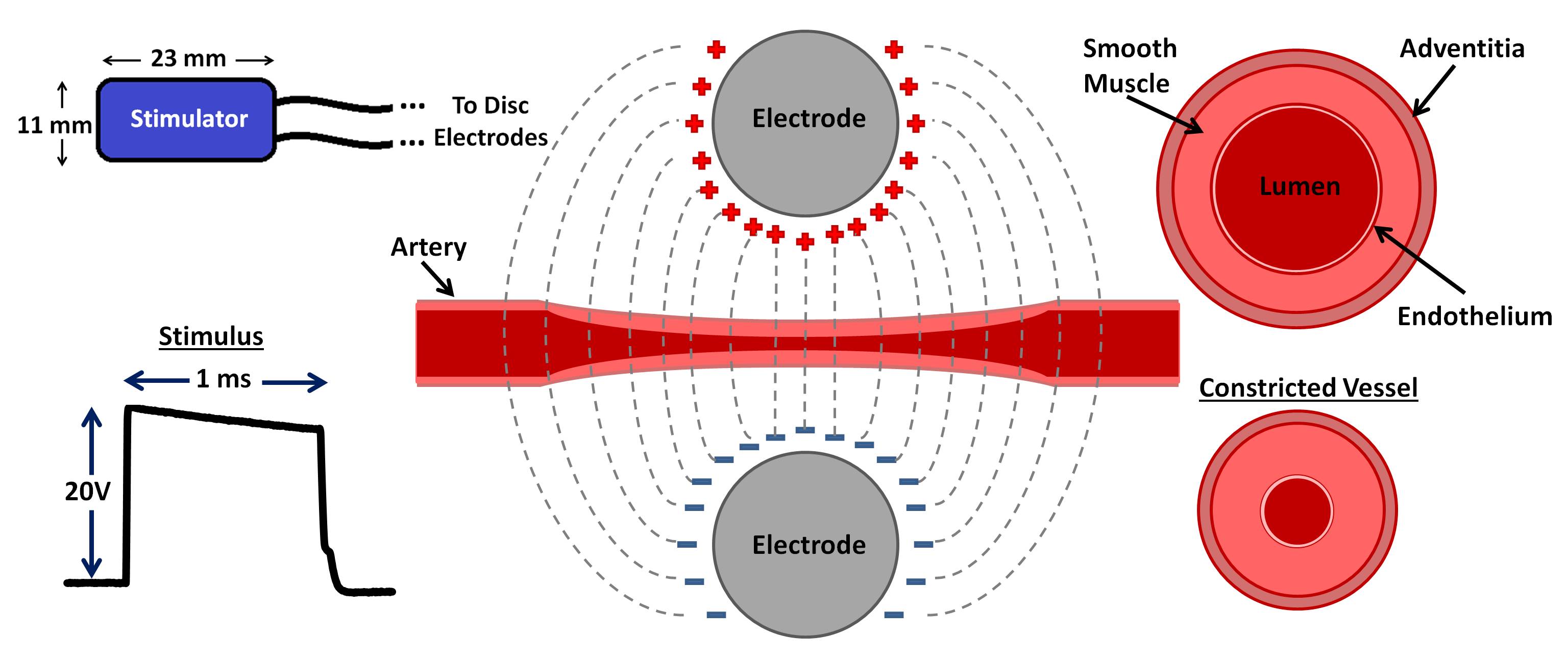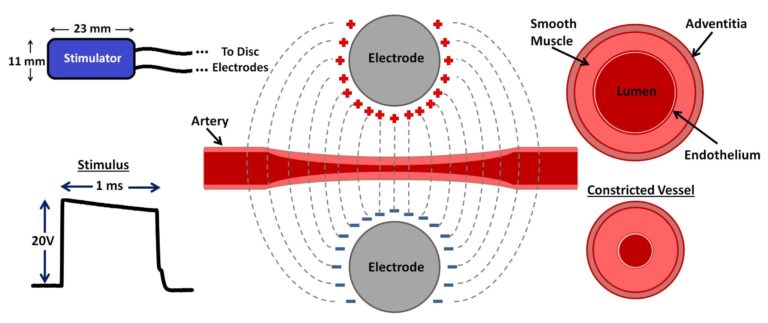Mark Brinton, Yossi Mandel, Roopa Dalal, Daniel Palanker, Stanford University
Volume 61, Issue 6, Page:1765-1771

Non-compressible hemorrhage is currently the most common cause of preventable death in battlefield and in civilian trauma injuries. Tourniquets, specialized wound dressings and hemorrhage-inhibiting biomaterials are not sufficiently effective in arrest of non-compressible hemorrhage and often cause collateral tissue damage. An effective, easy-to-use, portable device is needed to reduce blood loss in trauma patients immediately following injury and to maintain hemorrhage control up to several hours – until the injured is evacuated to a medical facility. We developed a miniature electrical stimulator (11mm x 23mm x 10mm including the battery) to induce vascular constriction and thereby reduce hemorrhage. Vasoconstriction of the rat femoral arteries and veins was studied with pulse durations in the range of 1μs to 10ms and repetition rate of 10 Hz. Pulse amplitude of 20 V, duration of 1ms and repetition rate of 10 Hz were found sufficient to induce rapid constriction down to 31 ± 2% of the initial diameter, which could be maintained throughout a two-hour treatment. Within one minute following treatment termination the artery dilated back to 88 ± 3% of the initial diameter, providing rapid restoration of blood perfusion. Histology indicated no damage to the vessel wall and endothelium 7 days after stimulation. The same treatment reduced the blood loss following complete femoral artery resection by 68 ± 11%, compared to untreated vessels. Very low power consumption during stimulation (<10 mW with 1.6 mm electrode) allows miniaturization of the battery-powered stimulator for hemorrhage control following vascular trauma in the field.
Keywords—Electrical stimulation, vasoconstriction, vascular trauma, hemorrhage control, junctional bleeding.

